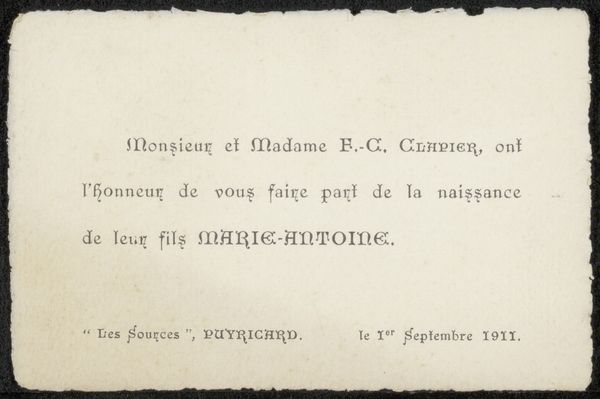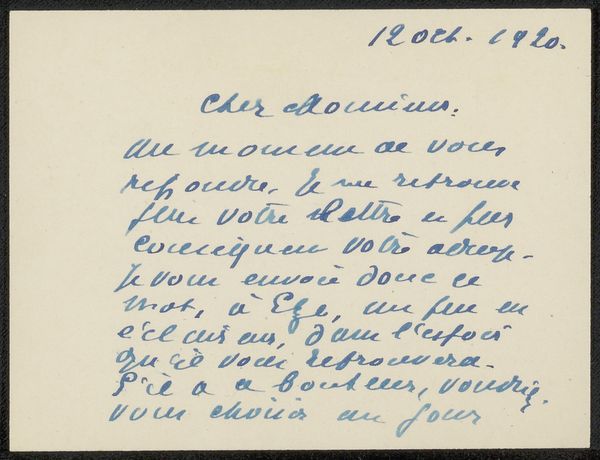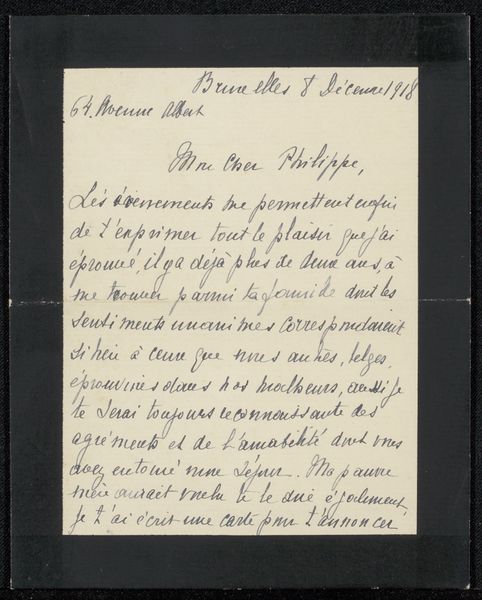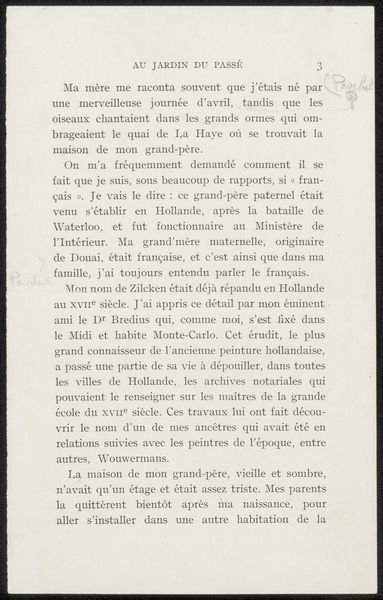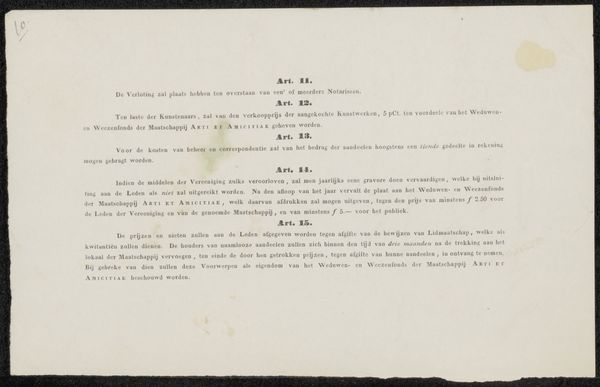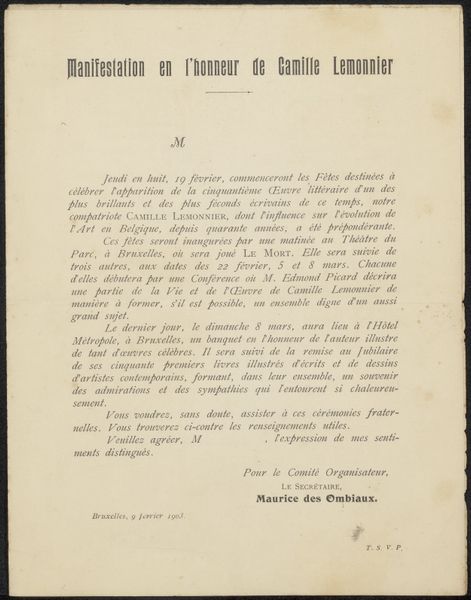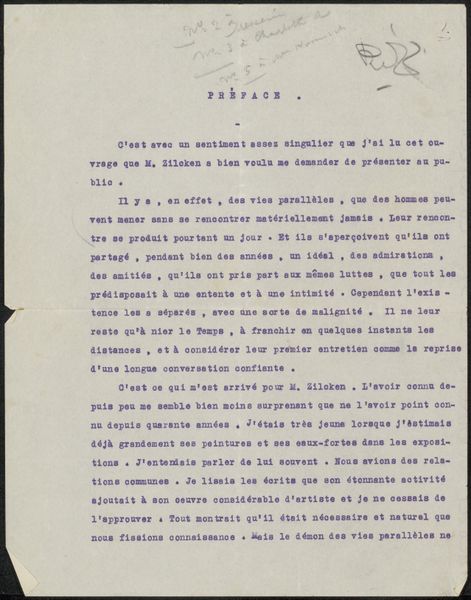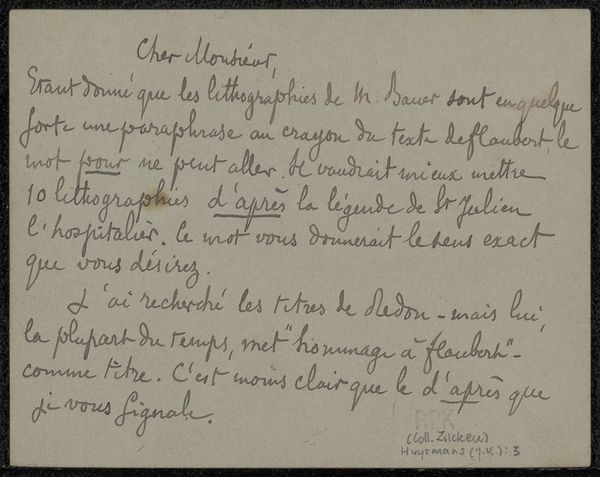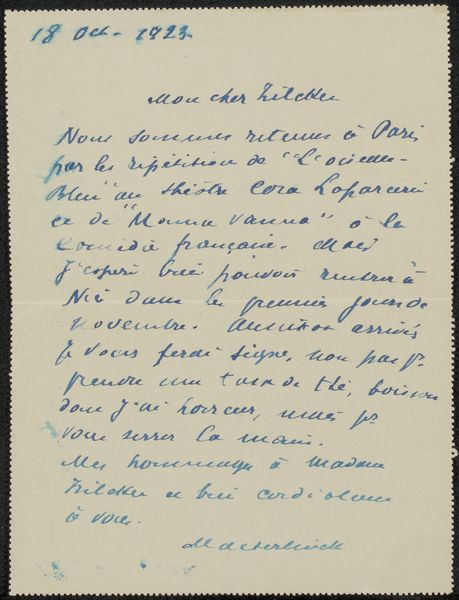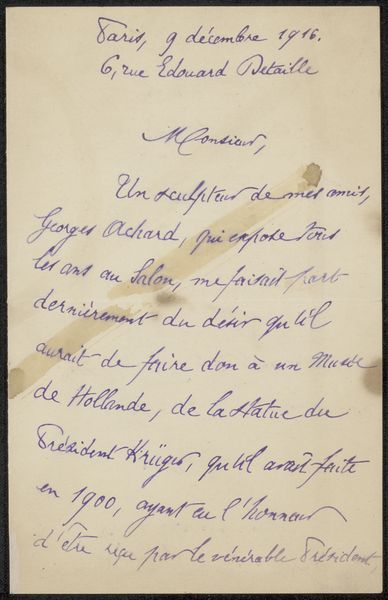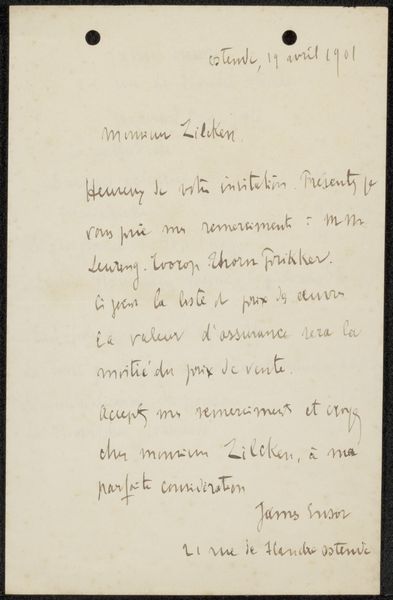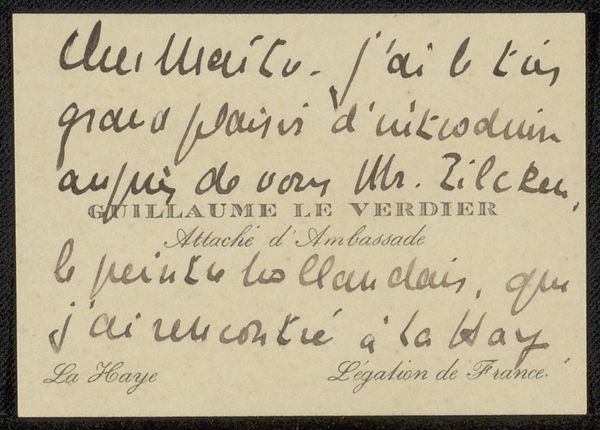
mixed-media, print, paper, typography
#
aged paper
#
mixed-media
#
ink paper printed
# print
#
paper
#
typography
#
watercolour illustration
Copyright: Rijks Museum: Open Domain
Editor: So, this is "Huwelijksaankondiging aan Philip Zilcken," a marriage announcement from before 1889, made of mixed media, primarily ink on paper. It's fascinating how such a commonplace object carries so much history, the typography itself telling a story. What jumps out to you about it? Curator: I'm struck by the physical reality of this announcement. Think about the paper – its production, the labor involved in its making. The ink, too, and the printing process, were likely far more manual than today. This wasn’t simply information; it was a crafted artifact signaling social standing through materiality. Editor: So, it's less about the 'who' of the marriage and more about the 'how' of its announcement? Curator: Precisely. How does this announce the family's position in society? Look at the choice of typography. The texture of the paper itself. These weren't accidents; these details convey meaning, reinforcing the social context of the event. It also asks a broader question, what are the economic circumstances of creating this? What would a cheaper invite have looked like? Editor: That’s an interesting angle. I was focused on the aesthetics, but thinking about the material cost and labor changes everything. So, seeing it as an artifact connected to its production helps understand it? Curator: Exactly! The materiality opens a whole avenue to see how this seemingly simple announcement is bound to the historical context, how the making of it can uncover economic conditions and power dynamics within the culture of the time. Editor: That’s really changed how I see this piece. It's not just about the event; it's about the entire system that allowed this type of announcement to exist in the first place. Thanks! Curator: Indeed. Looking beyond the surface helps understand social conditions behind this object. It encourages asking, "how can this inform a study of late 19th-century society in the Netherlands."
Comments
No comments
Be the first to comment and join the conversation on the ultimate creative platform.
